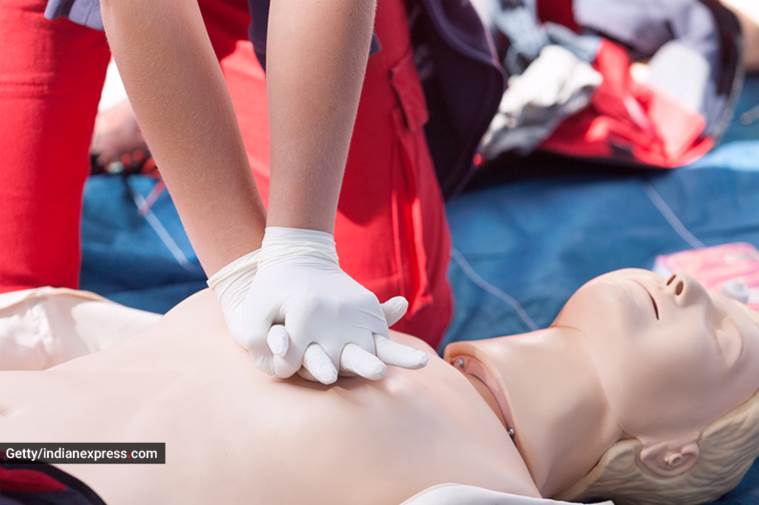CPR is basically done when "reviving a patient who is about to die", said a doctor

In what came as a shock to his teammates and fans, and also those watching the match from afar, 29-year-old Danish soccer player Christian Eriksen suddenly collapsed during the Euro 2020 opening match with Finland on Saturday. The Denmark midfielder fell down in the 42nd minute of the match while in action, causing people around him to panic.
In order to check if he is all right, his teammates gathered around him and one even appeared to stick his fingers in his mouth to clear his airway, or to see if he had swallowed his tongue. While medics soon rushed to the scene, they tried to help him by pumping his chest and performing CPR. The match was suspended.
The latest update on his health is that he is “awake” and “stable” in the hospital.
But, what exactly is CPR — the life-saving activity that was performed on Eriksen before he was taken off the field? Indianexpress.com reached out to doctors for answers.
Dr Md. Shakeel Ahmed, head — emergency department, Fortis Hiranandani Hospital Vashi said cardiopulmonary resuscitation (CPR) is a “lifesaving procedure”, “done when a person is unconscious and the heartbeat and breathing stops”.
“It is provided in an emergency for cardiac arrest and drowning. It is done to restore circulation of blood in the body and restart breathing,” he told this outlet.
The doctor explained that CPR is done by “making the victim lie in supine position” and “applying rhythmic hard and fast chest compression by using both hands”. “The process continues for around 100 to 120 compressions in a minute. After a round of five cycles of chest compressions, two [mouth-to-mouth] breaths have to be given by doing a head-tilt chin-lift maneuver.”
Dr Ravi Gupta, cardiologist at Wockhardt Hospital said CPR is basically done when “reviving a patient who is about to die”. “When you see someone has stopped breathing, or has suddenly become pulse-less, unresponsive and there is no medical help around, you can make an attempt to save the person [with CPR].”

Explaining the basic purpose of CPR, Dr Gupta said it is “A, B, C”, meaning “airway, breathing and circulation”. “The main purpose is to maintain circulation to the vital organs — heart and brain. If the brain does not receive blood supply for three minutes or more, irreversible damage can happen.”
It is best not to crowd around a patient while performing CPR. Their clothes have to be loosened. “In order to apply pressure on the chest, one must interlock their fingers and use their weight to give the compression. It can, at times, lead to a rib fracture, but that is something that is treated later on; the first thing is to revive the patient,” said Dr Gupta, adding that if there are two persons working on the patient, one can give mouth-to-mouth breaths and the other can give chest compressions.
Dr Ahmed said CPR can be only provided by a trained person who has “undertaken training for life-saving procedures”.
“There are many training institutions and national training programs to get certified in such courses like BLS (basic life support) and ACLS (advanced cardiac life support). The person is trained in life-saving techniques like chest compressions, airway management, use of AED, etc.,” he concluded.
For more lifestyle news, follow us: Twitter: lifestyle_ie | Facebook: IE Lifestyle | Instagram: ie_lifestyle
Source: Read Full Article
